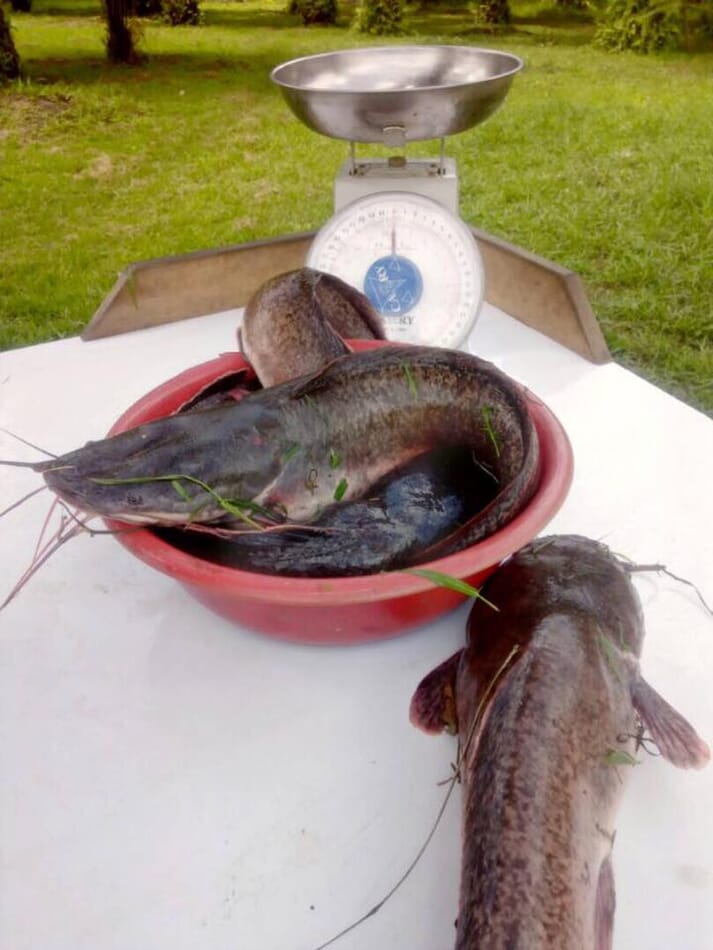THE SITUATION
Nigeria has a vast expanse of inland freshwater and brackish ecosystems that encourage fish farming, an enterprise that has endless possibilities to contribute significantly to the country’s Gross Domestic Product (GDP), creating job opportunities and generating income that can lift rural farmers out of poverty.
With a population of over One hundred and Ninety million people, Nigeria is the largest fish consumer in Africa and among the largest fish consumers in the world, with over 3.2 million tons of fish consumed annually. Yet, the country imports over 2 million metric tons of fish because of its limited domestic catch, and a total of 1.1 million metric tons of fish were cultured. Consequently, the country depends largely on the importation of frozen fish, resulting in an annual expenditure of N125 billion on fish imports. The limited knowledge of best management practices in aquaculture, limited access to quality feeds and fingerlings, access to finance, and insufficient market outlets; all contribute to the low output from the fish enterprise.
key aspects that can be enhanced in Nigeria’s catfish farming business
Nigeria’s catfish farming industry has experienced significant growth in recent years, contributing to the country’s economic development and providing a source of livelihood for many. However, there are still areas that require attention and improvement to ensure sustainable and profitable operations for catfish farmers. We’ll delve into some key aspects that can be enhanced in Nigeria’s catfish farming business.
- Quality Breeding Stock: One of the critical components of a successful catfish farming venture is starting with high-quality breeding stock. By investing in genetically superior fish, farmers can ensure better growth rates, disease resistance, and overall productivity. Government agencies and private organizations can collaborate to provide access to certified breeding stock and promote best practices in breeding management.
- Improved Water Quality Management: Maintaining optimal water quality is crucial for the health and growth of catfish. Regular monitoring of water parameters such as pH, dissolved oxygen, and temperature is essential. Farmers should be educated on effective water treatment techniques and filtration systems. Additionally, the government can establish guidelines for sustainable water use to prevent over-extraction from natural sources.
- Feed Formulation and Management: Developing cost-effective and nutritionally balanced feed is paramount for profitability in catfish farming. Research and development efforts should focus on creating locally sourced, high-quality feed options. Training programs and workshops can be organized to educate farmers on efficient feeding practices, including feeding schedules, portion sizes, and feeding frequency.
- Disease Management and Biosecurity Measures: Disease outbreaks can have devastating effects on catfish farms. Implementing strict biosecurity measures, such as controlled access, quarantine procedures, and disinfection protocols, can help prevent the introduction and spread of pathogens. Education on disease identification and treatment should be readily available to farmers, along with access to veterinary services.
- Market Access and Value Chain Strengthening: Connecting catfish farmers with reliable markets and establishing strong value chains is essential for sustainable business growth. Cooperative societies and farmer associations can play a vital role in negotiating fair prices and ensuring market access. Additionally, promoting the processing and value addition of catfish products can open up new revenue streams for farmers.
- Technology Adoption and Data-driven Decision Making: Embracing modern technology, such as automated feeding systems, water quality monitoring devices, and data analytics tools, can significantly improve farm efficiency and productivity. Encouraging farmers to adopt these technologies through training and financial incentives can lead to more profitable and sustainable operations.
- Regulatory Support and Policy Reforms: Government agencies should work closely with industry stakeholders to create a conducive regulatory environment for catfish farming. This includes streamlining licensing processes, providing access to subsidies and grants, and enforcing environmental sustainability standards. Policy reforms should aim to address the challenges faced by catfish farmers and promote responsible farming practices.
Conclusion:
By focusing on these key areas, Nigeria’s catfish farming industry can achieve higher levels of productivity, sustainability, and profitability. Collaboration between government agencies, research institutions, private organizations, and farmers is crucial for implementing these improvements. With concerted efforts, Nigeria’s catfish farming business can continue to be a driving force in the country’s agricultural and economic landscape.









